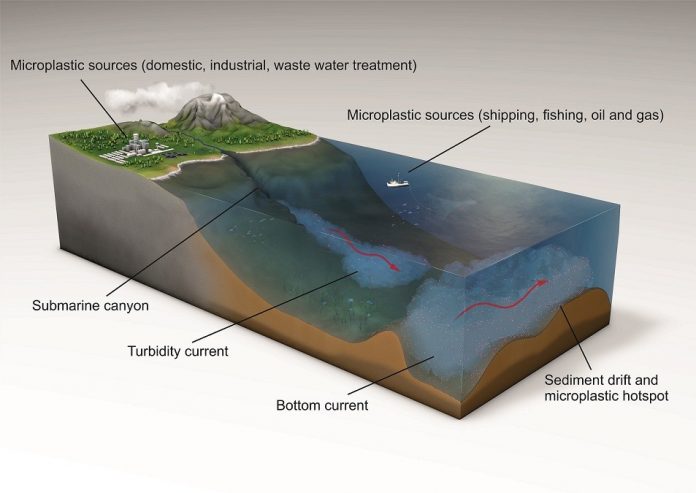Researchers have recorded the highest level of microplastics ever found on the ocean floor – with up to 1.9 million pieces in an area of just one square metre.
The discovery, made at the bottom of the Mediterranean, near Italy, highlights the problem of plastic pollution in our seas, 99 per cent of which lies beneath the waves.
Working as part of an international team the researchers have shown how deep-sea currents act as conveyor belts, transporting tiny plastic fragments and fibres across the seafloor.
The research provides the first direct link between the behaviour of these currents and the concentrations of seafloor plastics – dubbed ‘microplastic hotspots’.
These hotspots appear to be the deep-sea equivalents of the so-called ‘garbage patches’ of plastic waste formed by currents on the ocean surface.
Over 10 million tonnes of plastic waste enters our oceans each year.
Microplastics on the seafloor are largely made up of fibres from textiles and clothing that are not effectively filtered out in domestic waste water treatment plants and easily enter rivers and oceans.
Once in the sea, microplastics either settle slowly or are rapidly moved by currents caused by powerful underwater avalanches that travel down submarine canyons to the deep seafloor.
In deep waters, the tiny plastics are picked up and pushed along the seafloor by continuously flowing currents that concentrate fibres and fragments within large drifts of sediment.
These deep ocean currents also carry oxygenated water and nutrients, meaning that seafloor microplastic hotspots can also house important ecosystems that can be harmed by consuming or absorbing the microplastics.
The findings will help predict the locations of other deep-sea microplastic hotspots and shape research into the impact on marine life.
The lead author of the study, Dr Ian Kane of The University of Manchester said: “Almost everybody has heard of the infamous ocean ‘garbage patches’ of floating plastic, but we were shocked at the high concentrations of microplastics we found in the deep-seafloor.
“We discovered that microplastics are not uniformly distributed across the study area; instead they are distributed by powerful seafloor currents which concentrate them in certain areas.”







